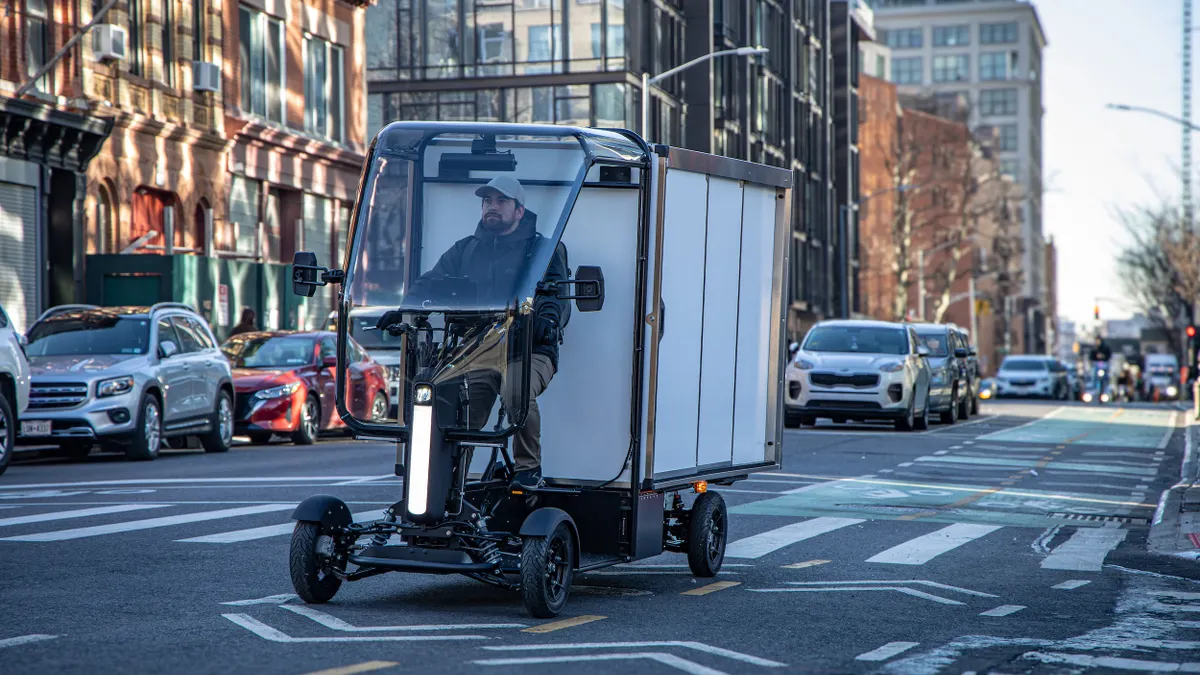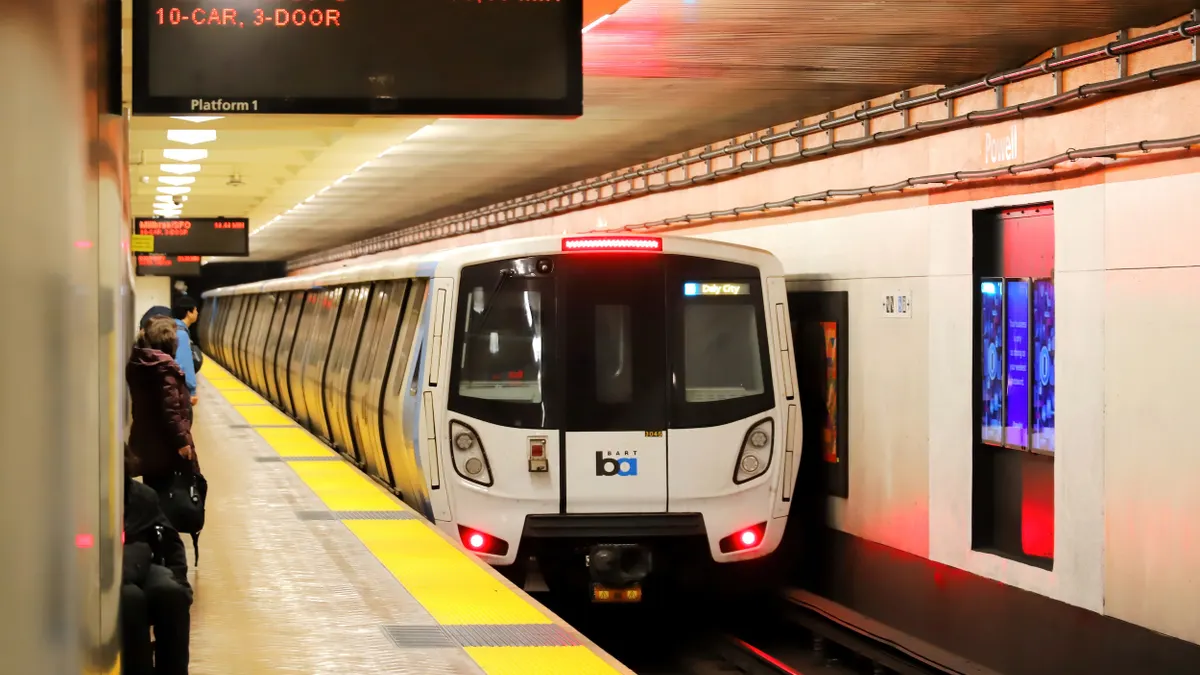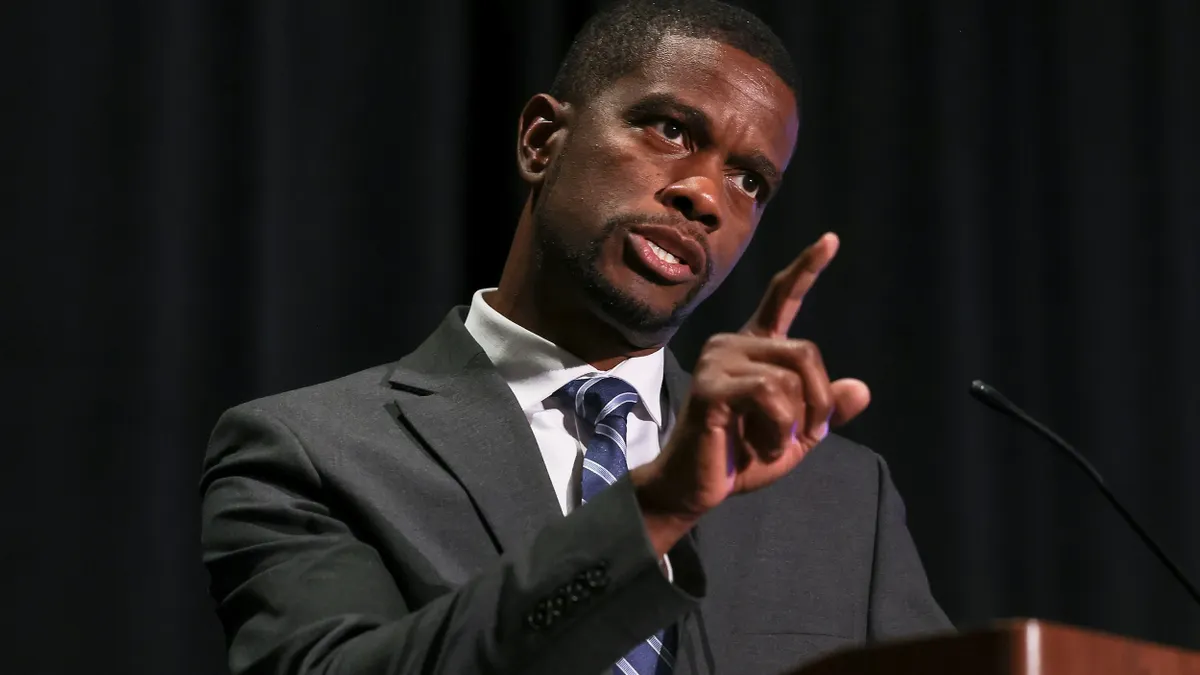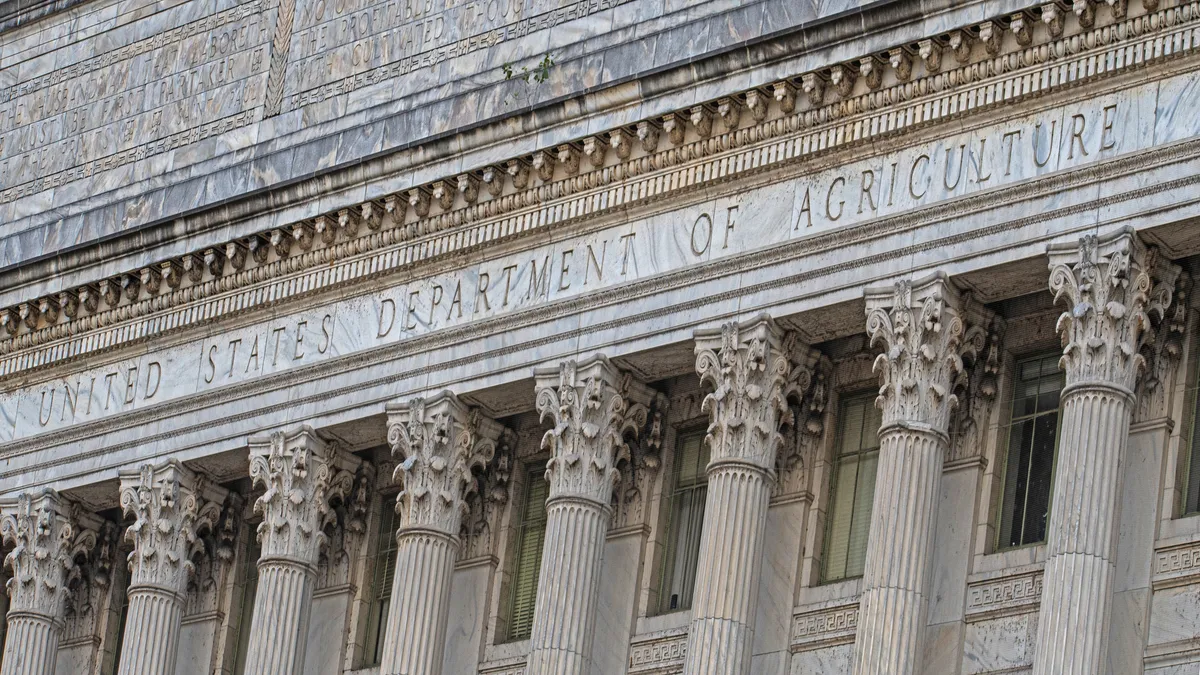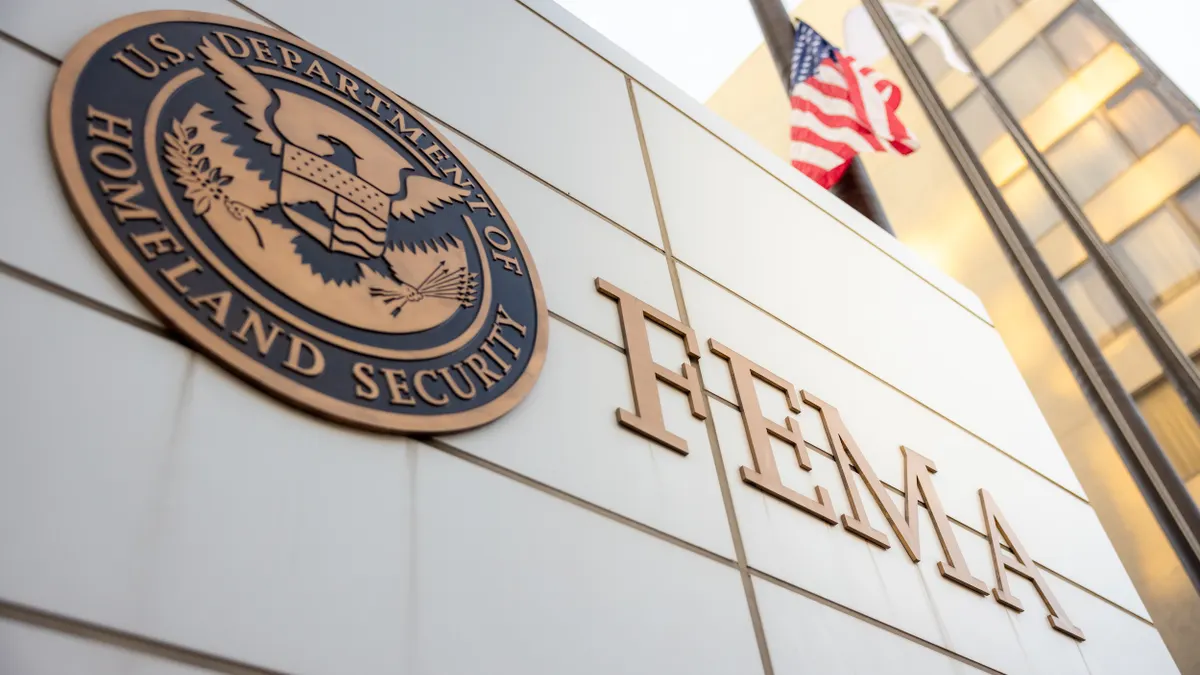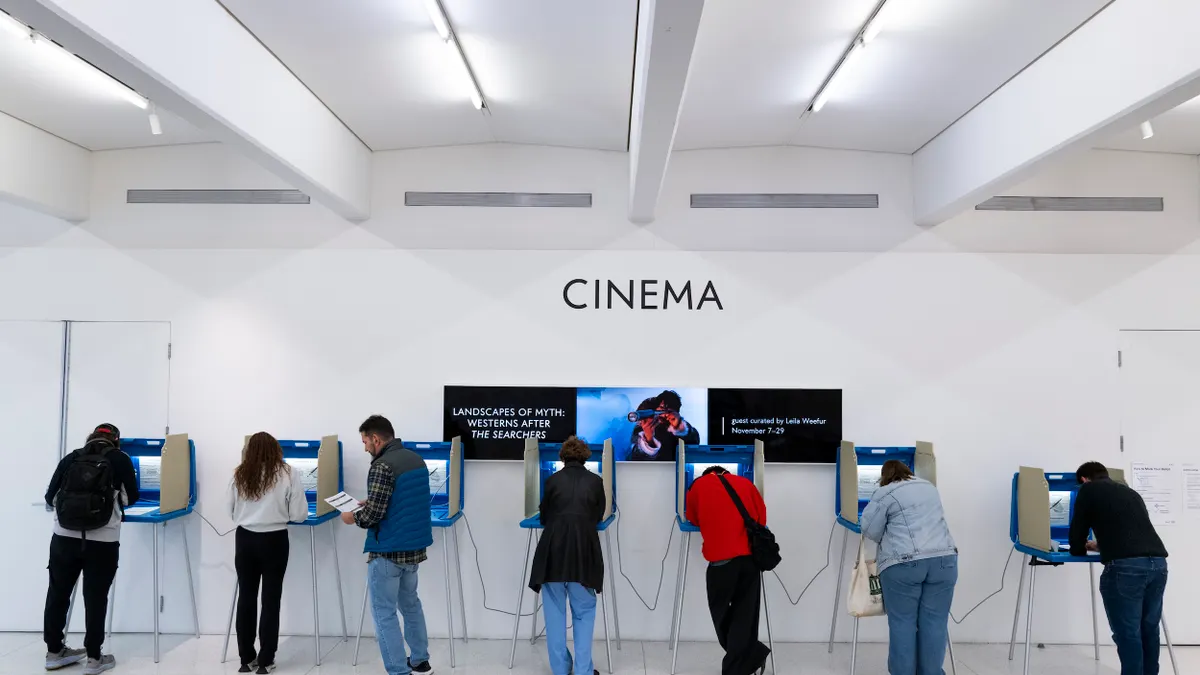Editor's note: This article was originally published in American City & County, which has merged with Smart Cities Dive to bring you expanded coverage of city innovation and local government. For the latest in smart city news, explore Smart Cities Dive or sign up for our newsletter.
Supply chain disruptions can occur from a wide range of factors, such as natural disasters, transportation-related issues, cyber security and other economic pressures, impacting the availability and timely delivery of goods and services globally.
Natural disasters alone have caused substantial disruptions in the United States in recent years. According to the National Oceanic and Atmospheric Administration, in 2021, the U.S. was hit by 20 different weather and climate disasters that each caused more than $145 billion in damage. This made 2021 the year with the second-highest number of billion-dollar disasters, surpassed only by 2020, which had 22 such events. Recent emergencies, from devastating floods in North Carolina to destructive fires in Los Angeles, highlight the sudden disruption challenges that can hinder procurement leaders' abilities to execute timely initiatives and secure essential goods and services for their communities.
Despite these known challenges, state procurement offices are still at the forefront of developing new strategies to maintain business continuity in times of unpredictability. Although many states have made advancements in their resilience efforts since the COVID-19 pandemic, recent data indicates that 42% of procurement leaders still believe supply chain disruption is the top risk of the many priorities essential to procurement’s future success. To address these challenges, state procurement offices must adapt to implementing a multi-layered strategy in their approach. This article will highlight three key strategies that can help chief procurement officials and their procurement teams stay one step ahead in an unpredictable environment.
1. Strategic planning and leveraging technology. To start, procurement leaders must focus on how to build upon their current strategies to thrive in times of uncertainty. Rather than planning for reactive purchasing during unpredictable situations, leaders must shift to the mindset of anticipating community needs instead. This means creating a contingency plan and identifying vital goods, services and key state offices that will become critical players in resilience strategies.
A key resource that can be factored into this strategy is integrating technology, like advanced forecasting and planning tools to incorporate into your procurement processes. These tools will enhance visibility to predict potential supply chain issues and can help you identify essential goods and services to secure, predict potential risk factors, monitor global trends and help analyze vast amounts of data that can be turned into actionable insights for real-time decision-making.
Additionally, streamlining internal contract management processes will continue to be a critical step for procurement offices seeking to improve operational efficiency. To optimize contract management, procurement offices should ensure they have contract management technology to automate various long-standing manual processes.
Digital contract management solutions can help organizations reduce supplier costs, expedite agreements with new partners, increase compliance, mitigate risks and strengthen both internal and external relationships. Staying informed about emerging technologies will enable organizations to optimize operations, enhance transparency and scale procurement efforts to meet evolving needs within their states.
2. Maintaining & diversifying your supplier ecosystem. While expanding supplier networks enables states to access a broader range of goods and services across industries, maintaining strong relationships with trusted partners remains equally vital. For instance, when states need to quickly secure essential emergency medical supplies and equipment, established long-term supplier relationships can serve as a primary resource during emergency procurement situations for critical needs.
However, relying solely on established vendors can create vulnerabilities depending on the need. Exploring new supplier resources support resilient procurement strategies by providing flexibility to maintain continuity of operations when market disruptions affect key suppliers. Additionally, adding local or sustainability-focused businesses helps align with state priorities and serves communities more effectively.
3. Optimizing state contracts to maximize impact. With the increased likelihood of supply chain disruptions caused by natural disasters, transportation issues and other unpredictable events, a key component in optimizing state contracts during a crisis requires strengthening supplier relationships, planning and enhancing emergency response procedures. Procurement leaders should evaluate current contracts that are in place to ensure they can fit the state's needs during times of crisis. Developing backup plans and contingency contracts with approved suppliers who can provide crucial goods and services when needed is essential.
Another critical consideration will be understanding and confirming where your state stands in line with procuring goods and services during times of disruption, such as receiving critical medical supplies during a hurricane or human-made emergency. This makes a huge difference in crisis response and possible goods shortages across the United States. Leveraging emergency preparedness resources, such as state-specific guides, can help clarify these processes and ensure more effective coordination in times of crisis.
While significant improvement has been seen within the supply chain since the COVID-19 pandemic, unpredictable disruption remains a top risk factor. Previous lessons learned have demonstrated that the only way to combat disruption is through procurement leaders addressing their individual state vulnerabilities to the supply chain and implementing adaptable, innovative and proactively strategic sourcing strategies to enhance decision-making according to their state needs.
Commentary is a space for state and local government leaders to share best practices that provide value to their peers. Email Smart Cities Dive to submit a piece for consideration, and view past commentaries here.
About the Author
Rebecca Montaño-Smith is the deputy chief learning officer - research and innovation for NASPO. She has a master’s degree in library and information science and leads NASPO’s research team in the discovery and sharing of best practices in public procurement for NASPO members and government procurement professionals around the country. Having been with NASPO for four years and with previous experience as a public librarian, Montaño-Smith oversees the development and publication of key materials, including NASPO’s textbook, State & Local Government Procurement: A Practical Guide, and information that support professionals in the public procurement field.





